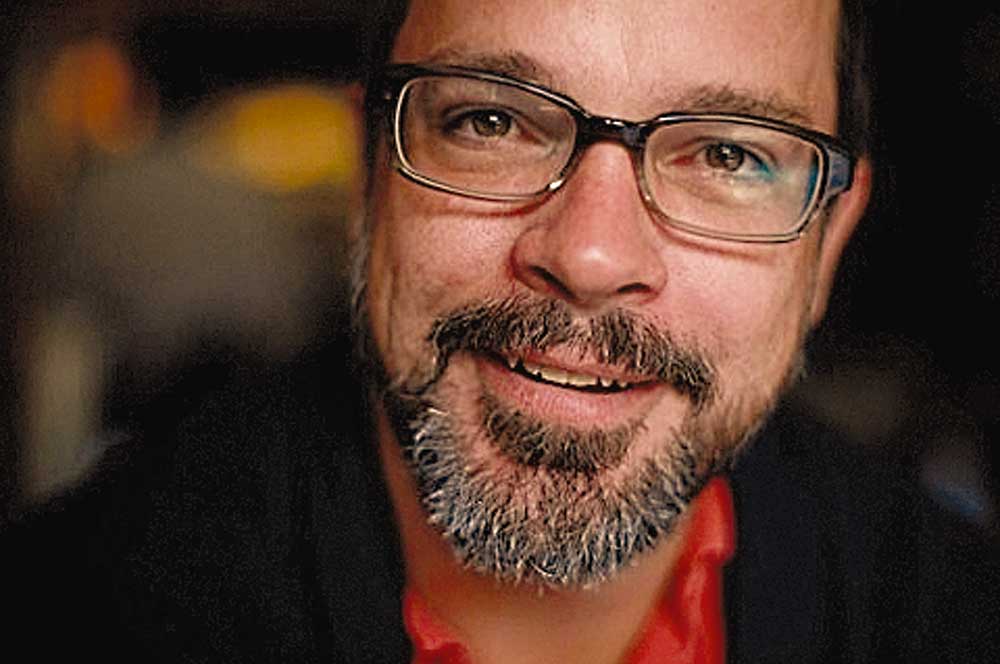The Little Prince, based on a much-beloved novella from 1943, begins when a pilot crashes his plane into the Sahara Desert. Stuck, alone and thirsty, he encounters a young prince from an asteroid, who tells him stories of his life in the cosmos. The Lookingglass production tackled the story with minimal props, swooping aerial effects and a stockpile of wet-erase window markers. Click on the images below for a closer look.

David Catlin, DIRECTION: The illustrations in the Little Prince book are hand drawn by the novelist. Those drawings are not visually complicated—they’re simple, clearly made up of just lines. We took some cues from that—we wanted it to feel like the play could be happening on a page. And a sheet of paper can contain whatever you want to draw on it. Throughout our adaptation, the pilot is drawing in a notebook, so we thought it would be great if he could actually write on the stage [above right]! We used window markers, and found we were able to wipe it off every night. The set was made of vinyl flooring that was flipped over, so there was no texture to hinder the drawing. Having these characters in costume interact with each other, in a space with very little scenic detail, made them just pop off the page.
We also wanted to fully occupy the space, not just in front of the audience but around them. Sometimes characters rolled out into the audience; others were flown in from above. That’s one of the ways that the story traveled out to them, and enabled them to participate a bit in the telling of it.

Sylvia Hernandez-DiStasi, ACROBATIC/CIRCUS CHOREOGRAPHER: As an artistic associate of Lookingglass, I have done several shows with David Catlin. Little Prince lent itself perfectly to aerial work, because it’s all about planets floating through space—no offense to David, but it almost writes itself [laughs]. My job was to help David see what he wanted to see—and he’s an awesome collaborator who’s open to suggestions. With the rose [right photo], I was pretty forceful about wanting her to be in the fabric and rising out of the stage as she blossoms. There’s a trap underneath the set, and she got lifted out of the stage. The silk at her feet represented the stem, and her costume was all folded up like a bud. When she got to the top, she pulled the string of her costume and it blossomed. The actress was hanging by her shoulders, which was kind of painful—we didn’t know if she could do the whole scene from that high up! The Little Prince involved a lot of trial and error—we’d ask the actor, “Can you do this?” and the actor would say, “I can’t do that, but I can do this.” And together, we enhanced the story and made it accessible for everyone.
The Little Prince by Rick Cummins and John Scoullar, based on the book by Antoine de Saint-Exupéry, ran at Lookingglass Theatre in Chicago Dec. 5, 2013–March 16, 2014, in association with the Actors Gymnasium. The production was under David Catlin’s direction and featured scenic design by Courtney O’Neill, costume design by Sally Dolembo, lighting design by William Kirkham, sound design by Rick Sims, acrobatic/circus choreography by Sylvia Hernandez-DiStasi, properties design by Maria DeFabo, rigging by Lee Brasuell, stage management by Tess Golden, production management by Joel Hobson and technical direction by Chad Hain.






